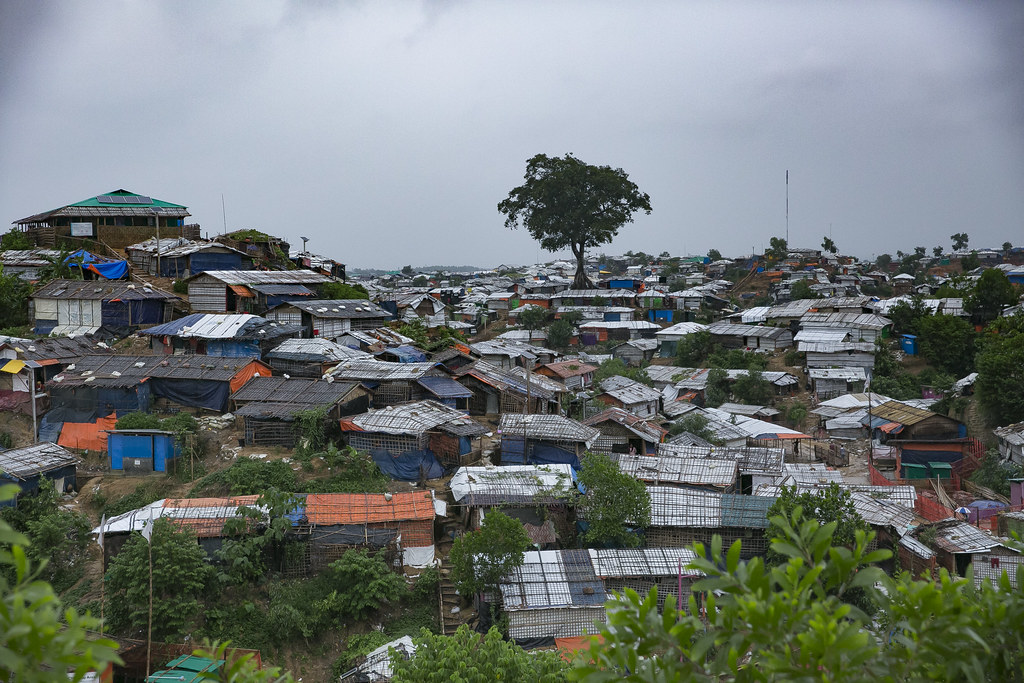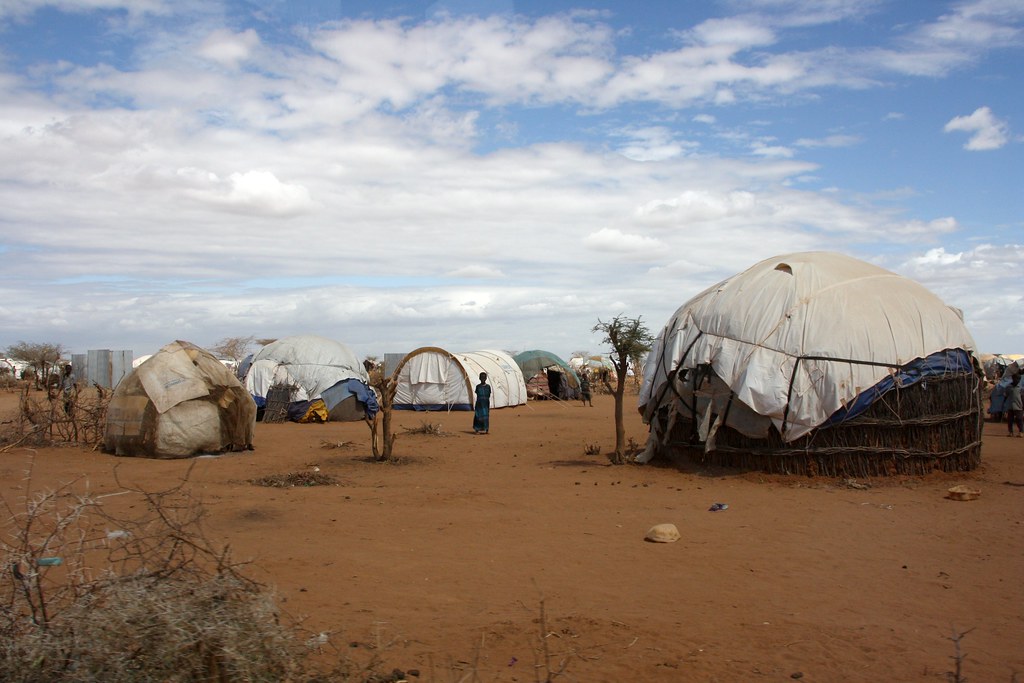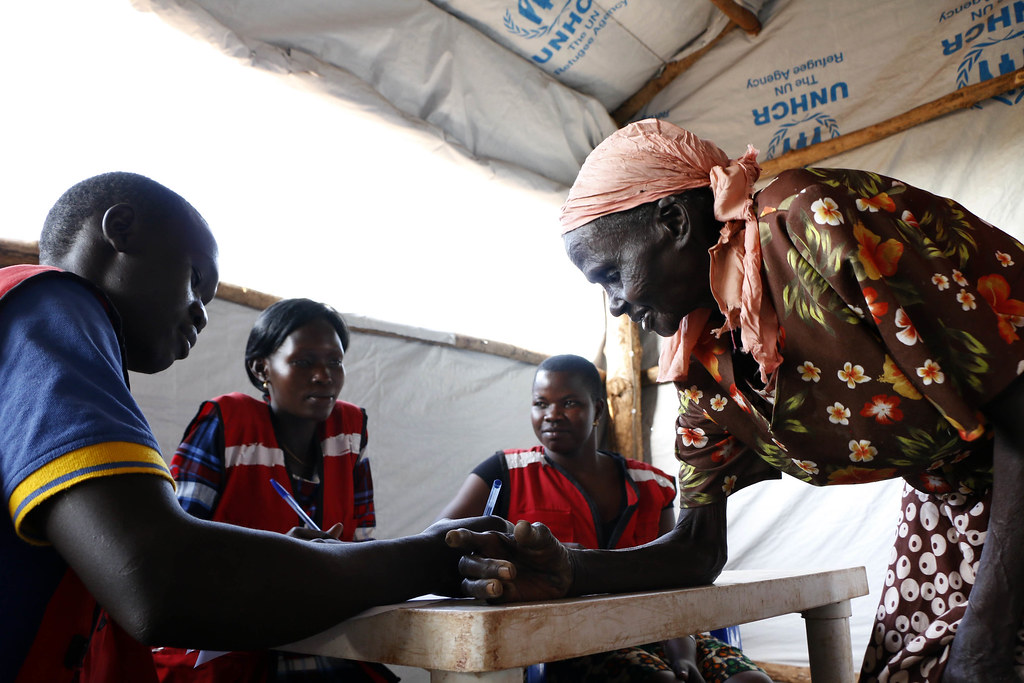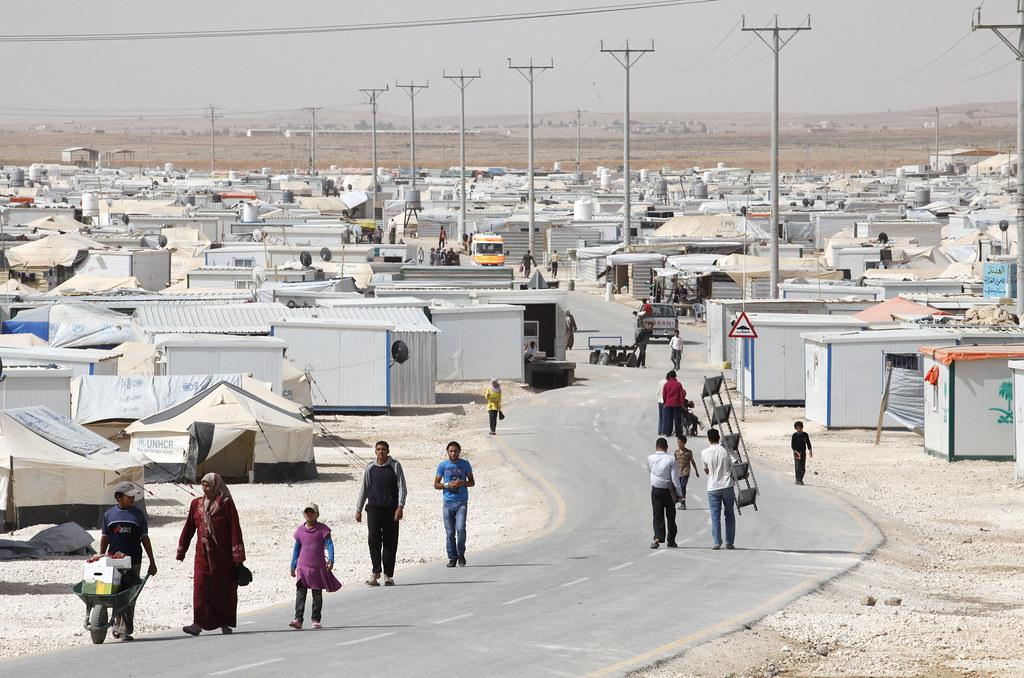As millions of people are forced to flee their homes from violence and persecution each year, often with nowhere to go, refugee camps are essential to providing shelter, safety, and basic services for refugees. These camps are often a crucial step in helping refugees reach stability, yet also present unique challenges due to their sheer scale, diverse populations, and the prolonged nature of displacement.
For many refugees, the ability to return home or safely remain in the country to which they’ve fled is not an option. RefugePoint helps refugees who can’t remain safely where they are to permanently relocate to a safe, new country to rebuild their lives. One way we do this is by identifying and referring refugees, often living in camps, for resettlement consideration by governments worldwide.
Below, we highlight the eight largest refugee camps globally, shedding light on their populations, challenges, and how organizations are supporting their residents.
Population: Rapidly increasing. 978,000 estimated in Rafah as of January 14, 2023.
Location: Gaza Strip
Rafah Refugee Camp was established in 1949 to house Palestinian refugees from the 1948 war, but has since become indistinguishable from the surrounding city. In early 2023, there were approximately 133,000 individuals registered in the camp. Today, as the war rages on in Gaza, tens of thousands of people have been forced to flee their homes, there are nearly one million displaced individuals living in and around the camp. The camp’s limited access to clean water and inadequate infrastructure compound the difficulties of living in an already crowded area. At the moment of publishing, conditions are dire in Rafah and the rest of Gaza – children face malnutrition, adults are struggling to find food for their families, the sanitation situation is worsening, and attacks are ongoing.
Population: More than 931,000 (as of 2023)
Location: Cox’s Bazar, Bangladesh
Until January 2023, Kutupalong, located in Cox’s Bazar, Bangladesh, was the largest refugee camp in the world. Originally informally established in 1991 to host Rohingya refugees fleeing Myanmar, its population has rapidly grown over the years due to subsequent waves of violence. While Kutupalong is the most well-known, the entire region hosts over a million displaced individuals. The camp’s density and limited resources pose significant challenges and the monsoon season poses a risk to all camps in Bangladesh, exacerbating existing challenges like sanitation and healthcare. Kutupalong has faced numerous natural disasters in recent years, including floods, fires, and earthquakes. Rohingya refugees have historically fled ethnic persecution in Myanmar, which has unfortunately continued to increase. RefugePoint has had multiple staff based in Cox Bazar over the years to assist Rohingya refugees access resettlement.

Kutupalong Refugee Camp. Credit: Allison Joyce
Population: More than 284,000 (As of October 2023)
Location: Turkana County, Kenya
Kakuma was first established in 1992 to host over 20,000 Sudanese children, known as the “The Lost Boys of Sudan,” who were displaced during the Sudanese civil war. The camp still accommodates approximately 100,000 South Sudanese refugees, as well as displaced individuals from across the continent. Kakuma has historically been one of the largest, longstanding refugee camps in the world, and many refugees have spent their entire lives within its perimeter. The camp’s large population creates challenges in terms of economic opportunities and quality education, among other issues.
RefugePoint works to identify skilled refugees for the Economic Mobility Pathways Pilot (EMPP) in Kakuma Refugee Camp. The EMPP was designed to help Canadian employers find qualified applicants while allowing refugees to rebuild their lives in a safe, new country. RefugePoint has had multiple staff based in Kakuma refugee camp supporting resettlement activities.
Population: Approximately 256,000 (As of October 2023)
Location: Garissa County, Kenya
The Dadaab refugee complex in Kenya was established in 1991 to accommodate Somali refugees escaping civil war. In 2011 and the years following, it was one of the largest camps in the world, hosting over half a million refugees. It is currently comprised of three camps—Dagahaley, Hagadera, and Ifo—Dadaab remains a critical refuge for many. After more than 80,000 refugees returned to Somalia, the two newest camps, Ifo 2 and Kambioos, were closed. The complex’s protracted existence presents challenges such as overcrowding, limited resources, and security concerns, making the provision of sustained support a constant struggle.
RefugePoint works to identify skilled refugees for the Economic Mobility Pathways Pilot (EMPP) in Dadaab Refugee Camp.

Dadaab Refugee Camp. Credit: DFID/Pete Lewis
Population: Approximately 220,000 in the Adjumani district (As of 2023)
Location: Adjumani District, Uganda
In 1997, the three camps in the Maaji refugee settlement were established to host the thousands of Sudanese refugees fleeing the Second Sudanese Civil War. Unfortunately, partially due to the location, the settlements have been attacked a number of times by the Lord’s Resistance Army, as have other camps in the country. Several organizations operate in Maaji, offering various services, such as education, social services, and livelihood opportunities. Organizations have planted trees to protect the camp from heavy rainfall and wind.
Population: Over 191,000 (as of 2023)
Location: Yumbe, Uganda
Bidi Bidi, situated in Uganda, predominantly hosts South Sudanese refugees fleeing conflict and instability. It was established in 2016 to host refugees fleeing the war in South Sudan and in 2017, became the largest camp in the world, reaching its maximum capacity. Uganda is one of the largest host countries for refugees, acting as a temporary home for over one million refugees and asylum seekers. The settlement’s vast size brings both opportunities and challenges. While it provides a relatively safer environment for its residents, it also requires substantial resources to provide essential services such as education, healthcare, and livelihood opportunities.

Bidi Bidi Refugee Settlement. Credit: Denis Onyodi/Uganda Red Cross-Climate Centre
Population: Approximately 136,000 (As of December 2023)
Location: Kigoma Region, Tanzania
Nyarugusu, located in Tanzania, hosts refugees mainly from conflicts in the Democratic Republic of Congo and Burundi. The camp was created by UNHCR and the Tanzanian government when about 150,000 Congolese refugees fled civil war in the Democratic Republic of Congo in 1996. The camp’s population continues to grow, placing significant strain on resources such as food, water, and healthcare facilities. Ensuring the well-being of Nyarugusu’s residents remains an ongoing challenge for humanitarian organizations operating in the region. In 2022, the camp reached a historical achievement, with zero maternal deaths across the 136K residents, thanks to significant investment in training healthcare workers and ensuring deliveries are carried out by a skilled professional.
RefugePoint currently has staff based near Nyarugusu Refugee Camp conducting child protection assessments in order to keep refugee children safe. Our Expert shared the following about the camp environment:
“Kasulu [the nearby town] experiences about seven months of fine red dust and during the six-month-long rainy season (October to April), Kasulu is wet and very muddy. The UNHCR Kasulu Field Office is about 65 kilometers away from Nyarugusu refugee camp.
The population in Nyarugusu refugee camp comprises mainly of Congolese and Burundians. The majority of the Congolese are of Bembe ethnicity who fled civil strife in the DRC en masse first in 1996 and then again in 2015. Many refugee families in Nyarugusu refugee camp are long stayers, some encompassing three generations of children, parents, and grandparents, the camp having been put up in 1996.”
Population: Around 83,000
Location: Mafraq Governorate, Jordan
Zaatari, located in northern Jordan, was established in 2012 by the Jordanian government and UNHCR to accommodate Syrian refugees fleeing the increasing humanitarian crisis. Over time, the camp has evolved into a semi-permanent settlement, complete with schools, markets, and other essential amenities, as have many camps on this list. Though it was designed to house 60,000 people, its population reached over 150,000 within a year of its founding. Despite the improvements, challenges such as limited employment opportunities and concerns about a protracted displacement crisis persist.

Zaatari Refugee Camp. Credit: Dominic Chavez/World Bank
What Needs to Be Done
The world’s largest refugee camps stand as a stark reminder of the challenges faced by displaced populations and the critical need for humanitarian efforts. These camps serve as temporary shelters, yet their prolonged existence underscores the importance of long-term solutions. Supporting refugees to access education, healthcare, livelihood opportunities, and a sense of community is not just a humanitarian imperative but a step towards addressing the root causes of displacement.
Annually, only ~2% of refugees are able to access long-term solutions (repatriation, resettlement, and legal integration in their current host country). The majority of refugees are dependent, indefinitely, on humanitarian aid to survive. Innovative, inclusive long-term responses are needed to shift this paradigm and address the significant nature of displacement today and in the future. This is the focus of RefugePoint’s strategy.
RefugePoint seeks to expand equitable access to lasting solutions and increase the total number of refugees able to access those solutions. We develop, test, and scale programs to support refugees who face vulnerabilities and are often overlooked by the system. We pursue these goals using three tactics: direct services, field building, and systems change. Through this three-pronged approach we improve the lives of thousands of refugees, strengthen the capacity of other organizations to better serve refugees, and influence global policy and practice to transform refugee response systems.
Stay in the know about our work with refugees: get refugee stories, events, RefugePoint news, and more delivered right to your inbox.
By subscribing you agree to with our Privacy Policy & provide consent to receive updates from Refuge Point.